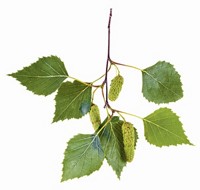Advertisement
Grab your lab coat. Let's get started
Welcome!
Welcome!
Create an account below to get 6 C&EN articles per month, receive newsletters and more - all free.
It seems this is your first time logging in online. Please enter the following information to continue.
As an ACS member you automatically get access to this site. All we need is few more details to create your reading experience.
Not you? Sign in with a different account.
Not you? Sign in with a different account.
ERROR 1
ERROR 1
ERROR 2
ERROR 2
ERROR 2
ERROR 2
ERROR 2
Password and Confirm password must match.
If you have an ACS member number, please enter it here so we can link this account to your membership. (optional)
ERROR 2
ACS values your privacy. By submitting your information, you are gaining access to C&EN and subscribing to our weekly newsletter. We use the information you provide to make your reading experience better, and we will never sell your data to third party members.
Pollution
New Vehicle Air Filters Trap Tiny Troubling Pollution Particles
Air Quality: Researchers show that new vehicle air filters do a better job than conventional ones of trapping potentially harmful vehicle exhaust particles less than 100 nm in diameter
by Puneet Kollipara
February 7, 2014

When a driver cranks up her car heater or air conditioner, a cabin air filter blocks dust, pollen, and particulate matter from vehicle exhaust from blowing into the car. But these filters struggle to catch super-tiny exhaust particles that may contribute to lung and heart disease. Now researchers report that a new cabin filter with small fibers can trap large amounts of particulate matter, especially possibly damaging ultrafine particles (Environ. Sci. & Technol. 2014, DOI: 10.1021/es404952q).
Scientists know that micrometer-diameter particulate matter poses cardiovascular and pulmonary health risks. But a growing body of research suggests that smaller particulates from vehicle exhaust can also lodge in people’s lungs, enter the circulatory system, and cause inflammation, which may trigger asthma attacks or worsen heart disease. Ultrafine particles (UFPs), which are less than 100 nm in diameter, can penetrate deeper into the lungs than other particulate matter can. They also dance around the pollution-trapping fibers in current cabin air filters.
Many people may not know that such tiny particles exist, much less that they pose health risks, so automakers may not feel the need to install better filters, says Yifang Zhu of the University of California, Los Angeles. To curb exposure on their own, passengers could turn off the cars’ open-air ventilation and set the cabin air to recirculate. But over time carbon dioxide levels can build up to five or more times the outdoor concentration as passengers exhale. Some research, Zhu says, suggests that CO2 at that level impairs reaction time and decision-making in drivers.
Zhu and UCLA colleague Eon S. Lee sought a way around this CO2-versus-UFP dilemma. They thought the solution could be high efficiency cabin air filters. The researchers obtained two types of custom-made filters from Switzerland-based firm IQAir. Both filters are made from glass and polymer fibers smaller than those in conventional filters. Zhu and Lee figured that the smaller, closer-packed fibers would block more UFPs.
To test that prediction, they put a dozen passenger vehicles through four separate test drives each involving a different filter scenario: They drove the vehicles on local roads and a freeway with the already installed conventional filter, each of the two new IQAir filters, and no filter installed. The researchers monitored in-cabin and outdoor air quality through several standard methods, including condensation particle counters. The new filters far outperformed the manufacturer-installed ones, the researchers found. The custom filter with the smallest fibers kept UFP levels in the cabin 93 to 99% lower than outdoor road levels. Conventional filters achieved just 35 to 70% reductions.
The researchers caution that these tests are short-term ones. They don’t know yet if the new filters can maintain that performance in the long term. Moreover, the custom filters’ smaller and denser fibers cause air to flow into the cabin somewhat more slowly than conventional filters do. Also it’s not yet clear how much these filters would cost to make and install, Zhu says. Still, this proof-of-concept study, she says, shows the filters’ promise at letting drivers keep outside air flowing in, while keeping UFP out.
Doug Brugge, a professor of public health and community medicine at Tufts University, agrees that the study is a good demonstration of the benefits of the new filters. He suggests that the team also study the filters in a more real-world context. For example, some passengers may roll down their windows, hurting the filters’ effectiveness, he says.





Join the conversation
Contact the reporter
Submit a Letter to the Editor for publication
Engage with us on Twitter